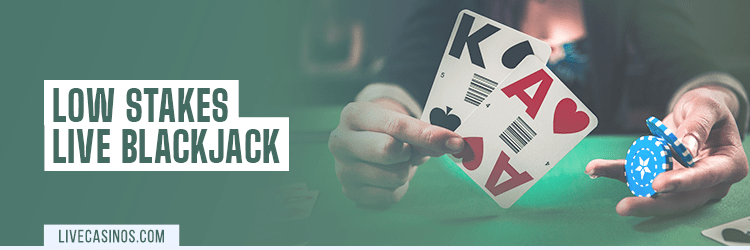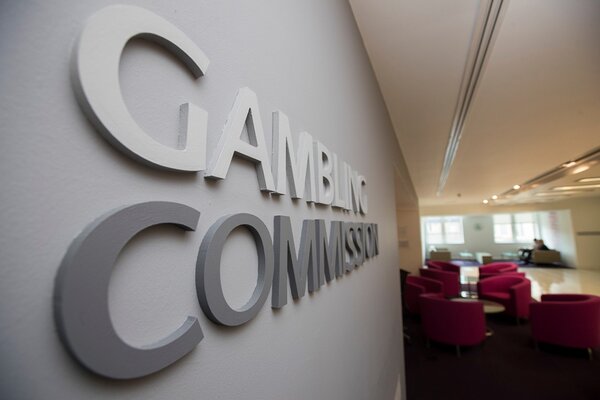The 1326 strategy is a positive progression betting system that uses a simple 1-3-2-6 sequence. In other words, it’s a simple staking system that increases the game stake after every winning round based on a set pattern.
‘Positive progression’ refers to the fact that the system raises the stakes when winning, but lowers them after a loss. This approach allows players to take advantage of short winning streaks, maximizing profits if they hit a string of good luck.
As a positive progression strategy, the 1-3-2-6 is related to other systems such as the Paroli, the Reverse D’Alembert, or Oscar’s Grind. However, not much is known about the origins or history of the pattern itself.
Technically, this system can work with any even money bet – any wager with a roughly 50% chance to win and a 1:1 payout. However, the 1-3-2-6 system is most often seen in blackjack because its short sequence and non-linear progression work well with the unique aspects of blackjack as a game.
How the 1-3-2-6 Sequence Works (Step-by-Step)
The 1-3-2-6 strategy in blackjack follows a few simple rules:
- Every time you win, increase the stake for the next bet by following the 1-3-2-6 sequence: bet 1 Unit, then 3 Units, then 2 Units, then 6 Units.
- If you lose a bet or win 4 rounds in a row, reset back to the beginning (1 Unit stake).
- If you push by being tied with the dealer, go back to the previous bet.
The step-by-step process should look a bit like this:
- Step 1: Bet 1 Unit
- Step 2: If you win, bet 3 Units. If you lose or push, go back to Step 1.
- Step 3: If you win, bet 2 Units. If you lose, go back to Step 1. If you Push, go back to Step 2.
- Step 4: If you win, bet 6 Units. If you lose, go back to Step 1. If you Push, go back to Step 3.
- Step 5: If you win or lose, go back to Step 1. If you Push, go back to Step 4.
Take note of the Tie rule, which many guides to the 1-3-2-6 system overlook. After all, 8-9% of all blackjack rounds end in a tie.
You can also use this simple flowchart to keep track of the decision-making process of the 1-3-2-6 blackjack strategy:

The purpose and benefits of the 1-3-2-6 system are illustrated by examining all of the potential outcomes.
The sequence can end in 5 ways: by losing one of the four bets or by winning all of them in a row. Let’s examine these outcomes and the result they would have on your bankroll:
The table below showcases the 1-3-2-6 system through a more concrete example of using $5 units per round.
Blackjack-specific Rules & Edge Cases
Betting systems are not commonly used for blackjack because the game has more than two possible outcomes. However, the 1-3-2-6 system mitigates some of those issues, which makes it uniquely suited as a blackjack betting strategy.
Let’s consider some of these rules and how they should affect your decision-making if you’re using the 1-3-2-6 strategy.
Handling Blackjacks (3:2 vs 6:5)
Although winning with a natural 21 is generally a boon while playing blackjack, it also throws off the consistency of betting systems such as the 1-3-2-6. Seeing how consistency and structure are some of the main benefits of staking plans, this can be a bit of a problem for beginners.
A blackjack win essentially means you win 1.5 Units, assuming the bet is 1 Unit. While this is good for your bottom line, it ultimately breaks the sequence we described above and affects your total profit/loss.
The easiest way to deal with this is to disregard the extra 0.5 Units. Just put them aside as an extra bit of bankroll and continue the 1-3-2-6 sequence as if the win was a regular one.
The alternative would be to increase the size of a Unit, which would effectively alter the betting sequence. For example, if you were to win Blackjack on the third bet, you would continue by betting 9 units for the fourth bet.
All of this is needlessly complicated and offers no clear benefit. That’s why our advice is to just stick with a standard unit size and keep the system consistent.
This remains true no matter the table rules regarding blackjack payouts, which are typically either 3:2 or 6:5. However, we highly recommend only ever playing at tables with 3:2 blackjack payouts. They’re objectively superior because they have a noticeably lower house edge than 6:5 tables.
Double Downs & Splits Inside 1-3-2-6
The other reason that betting systems don’t work too well with blackjack is due to the Double Down and Split moves. These decisions require the player to double their stake for the round during the round itself, which throws off the pre-set progression.
The rule here is simple: Double/split decisions follow basic blackjack strategy, not the betting system. Your “unit” refers only to the initial bet for the round. Any increases before the round is resolved do not affect the progression in any way.
If you’re not sure how to deal with Splits and Doubles, here’s what to do:
- Double:
- If you double down and win, put the extra winnings into your session bankroll and continue playing as if you won without doubling.
- If you lose, simply reset back to the beginning of the sequence normally.
- Split:
- If you win both Split hands, pocket the extra winnings and continue playing as if you won without a Split.
- If you win one hand and lose the other, treat the round as a push ($0 net change) and repeat the bet.
- If you lose both hands, reset back to the beginning of the sequence.
Insurance (Should You Ever Take it?)
No, you should never take Insurance in blackjack. The betting system you use does not change this simple bit of blackjack advice in any way.
The problem with the Insurance bet is that it has a massive house advantage of 7.4%, which is extremely poor compared to the ~0.50% house edge of the main blackjack bet.
For the sake of thoroughness, we should mention that some players and experts argue that there are specific situations in which proficient card counters can actually make use of the Insurance bet. However, these claims are disputed and quite controversial. The only time an Insurance bet is apparently worthwhile is if they manage to count a +3 True Count and the dealer draws an Ace, which is an extremely unlikely set of circumstances. If you’re not sure what that means or why it’s such a fringe case, check out our guide to blackjack card counting.
Does 1-3-2-6 “work”? What the Math Says
Let’s make one thing clear right away: the 1-3-2-6 betting system does not increase your chances of winning blackjack, and it does not ensure any sort of statistical advantage.
In other words, the house advantage, return-to-player rate, and expected value of blackjack remain the same whether you use the system or not.
So what does it do, exactly?
For starters, betting systems are an effective way to manage your money. They provide consistency to your betting and structure to a typical game session, which is handy from the perspective of bankroll management and responsible gaming.
Secondly, the 1-3-2-6 betting system does affect the overall volatility of your session because it increases the relative effect of winning and losing streaks on your bankroll.
As a positive progression system, the strategy makes winning streaks more profitable, as showcased in the examples above. However, it also means that “choppy” results (series of rounds with alternating win/loss outcomes) lead to a bigger loss compared to flat betting, in which the player simply repeats the same bet over and over.
This analysis of the 1-3-2-6 system by Michael Shackleford, the famed Wizard of Odds, showcases this perfectly through graphs and tables. A simulated bakroll that uses the 1-3-2-6 system has higher highs and lower dips, but ultimately ends up with a slight net loss. For example, using the system for roulette results in a net loss of 0.01 units per session due to the game’s house edge.
However, blackjack is unique among casino games because players can actually impact the house edge – just not through betting systems. If you want to effectively decrease the house advantage and win more using blackjack, here’s what actually matters:
- Table rules: Some blackjack tables have more more favorable rules than others. For example, you should look for tables with 3:2 blackjack payouts, ‘Dealer stands on Soft 17’ rules, allowed Doubles after Splits, and Surrender options available.
- Basic strategy: Basic blackjack strategy essentially tells you the mathematically best decision in any given situation based on your hand total and the dealer’s upcard. It ensures the lowest possible house edge you can achieve at around 0.5%, but it can’t overcome the casino’s advantage. Basic strategy is typically used with the help of blackjack strategy charts.
- Card counting: Card counting, such as by using the Hi-Lo system, is one of the only mathematically proven ways to overcome the house edge of casino games. However, it’s hard to get right and almost impossible to pull off in modern casinos, especially if you’re playing online.
How to Choose Your Base Unit & Bankroll (Beginner-safe)
The size of a single Unit is based on your total bankroll. Start by determining how much you’re willing to use in the current session, and split it into equal parts.
A common rule of thumb is to use between 1% and 2% of your total bankroll per Unit. The bigger the percentage, the more aggressively you’ll play, which increases the risks but also the profits.
Of course, the unit size also depends on table limits:
- Minimums: 1 Unit has to be large enough to meet minimum betting requirements. In most live casino tables, this is around $5. If you’re on a tight budget, consider playing one-to-many live blackjack tables where all players share the same hand, which often have minimums as low as $1.
- Maximums: Make sure that 6 Units do not exceed the maximum bet the table accepts.
In the article we mentioned above, Shackleford provides a simple rule: one unit should be 1/6 of what you’re comfortable losing in a single hand.
We also recommend setting stop/loss and stop/win conditions, as well as other guardrails:
- Win goals: Set a hard win goal and stop playing if you reach it. For example, +20 units is an ambitious but attainable goal.
- Loss limits: Set a hard limit on how much you’re willing to lose. For instance, if you ever lose 30 units in a single session, stop playing.
- Max cycles: You should also know when to stop, even if you don’t reach your win/loss limits. A good approach is to stop playing after a specific number of 1-3-2-6 sequences.
- Timeouts: Make sure you stop playing if you feel yourself becoming emotional or frustrated. This is a good rule to have for all forms of gambling, regardless of your strategy.
Step-by-step Walkthroughs
To highlight some of the benefits and effects of the 1-3-2-6 strategy in blackjack, we’ll walk you through a few simulated sessions.
Example A showcases a “choppy” session of 12 rounds in which wins, losses, and pushes happen intermittently. These are poor conditions for the strategy and highlight some of its weaknesses.
The example uses a $5 Unit.
Example B showcases a “streaky” session of 12 rounds in which wins and losses come in clusters.
In both examples, the results are the same: 5 wins, 6 losses, and 1 push, mirroring a realistic series of 12 blackjack hands. However, the overall result of the bankroll is starkly different due to how the wins and losses were clustered.
Pros & Cons (for real beginners)









































 Roulette
Roulette
 Blackjack
Blackjack
 Baccarat
Baccarat
 Poker
Poker
 Sic Bo
Sic Bo
 Dragon Tiger
Dragon Tiger
 Game Shows
Game Shows  Top 5 Games
Top 5 Games  See more
See more  Roulette Casinos
Roulette Casinos  Low Limit
Low Limit  High Limit / VIP
High Limit / VIP  Exclusive
Exclusive  How to Play
How to Play  Basic Strategy
Basic Strategy  Top Tips
Top Tips  FAQ
FAQ  Blackjack Casinos
Blackjack Casinos  Baccarat Casinos
Baccarat Casinos  Bonuses
Bonuses  Poker Casinos
Poker Casinos  Game Providers
Game Providers  Sic Bo Casinos
Sic Bo Casinos  Dragon Tiger Casinos
Dragon Tiger Casinos  Credit and Debit Card
Credit and Debit Card  e-Wallet
e-Wallet  Cryptocurrency
Cryptocurrency  Bank and Checks
Bank and Checks  Pay by Phone and SMS
Pay by Phone and SMS  See more
See more  How-To Guides
How-To Guides  Top Lists
Top Lists  In-Depth
In-Depth  Strategy
Strategy  Casino & Games
Casino & Games  Insight
Insight  News
News  Promotions
Promotions 
 Guide to Live Casinos
Guide to Live Casinos  Top 10 Live Casino Tips
Top 10 Live Casino Tips  Studio Locations
Studio Locations  FAQ & Help
FAQ & Help  Meet The Dealers
Meet The Dealers  Our Awards
Our Awards  How We Rate
How We Rate  Responsible Gambling
Responsible Gambling 




























 ENG
ENG 







 Facebook
Facebook
 Pinterest
Pinterest
 Twitter
Twitter
 LinkedIn
LinkedIn
 Copy Link
Copy Link 



















